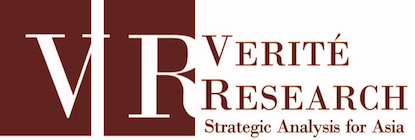Society
Sri Lanka is home to 21.4 million people, of which over five million live in the Western Province. Spanning across 65,610 square kilometres, Sri Lanka is divided into nine provinces and 25 districts. The population is made up of several ethnic groups, which include Sinhalese, Tamils, Moors, Burghers, Malays and Sri Lankan Chetties.
Sinhalese are the numerical majority, making Sinhala the most widely spoken language. In the last national census in 2012, it was recorded that out of 20 million people, around 15 million were Sinhalese. With nearly 2.2 million in the Tamil community, Tamil is the second most commonly spoken language. The rights to these languages are officially recognised by Chapter IV in the 1978 Constitution, while English is listed as the ‘link’ language. Accordingly, some of the country’s media organisations cater to a variety of audiences. For instance, Wijeya Newspapers Limited, Associated Newspapers of Ceylon Limited, The Capital Maharaja Organisation Limited and Asia Broadcasting Corporation (Private) Limited produce content in all three languages.
Language has remained a politically sensitive issue in Sri Lanka throughout the last century. In 1956, the state enacted the Official Language Act, No. 33 of 1956, making Sinhala the country’s only official language. As language is closely connected to ethnicity, positioning Sinhala as the official language caused ethnic tension and factored in the nearly 30-year armed conflict in Sri Lanka. This split between ethno-linguistic communities can be observed in how the Sinhala and Tamil media report on politically sensitive issues today.
Recently, religion has also become a basis for tension. The predominant religion in Sri Lanka is Buddhism, which is followed by a majority of Sinhalese. It is projected that in 2020, Sri Lanka will be home to around 15 million Buddhists, 1.6 million Christians, 2.3 million Muslims and 3 million Hindus. The post-war period has witnessed a sharp increase in ethno-religious violence targeting mosques, Muslim businesses and homes.
A large community of Sri Lankans and persons of Sri Lankan origin resides overseas. While the armed conflict drove much of this migration, many also migrated for economic reasons. The expatriate community, which includes Tamil Diaspora settlements in countries such as India, the UK, Norway, Canada, and Australia, regularly consumes many of the local news publications and radio programmes. Current labour migration from Sri Lanka tends to be focused on the Middle Eastern region, where local media such as radio channels are streamed via the Internet.
Sources
CIA. World Fact Book
Retrieved from CIA Library Publications on 25 July 2018.
Dehlvi, G. R. (2018). State of Emergency in Sri Lanka: 'Supremacism' of Sinhalese Buddhists or ‘Segregation’ of Wahhabi Muslims?
Retrieved from FirstPost on 25 July 2018.
Department of Census and Statistics. (2012). Population and Housing.
Retrieved from Department of Census and Statistics on 25 July 2018.
Department of Official Languages. Official Languages Policy.
Retrieved from Department of Official Languages on 25 July 2018.
Government of Sri Lanka. Population and Housing.
Retrieved from the Department of Census and Statistics on 25 July 2018.
Pew Research Centre. (2015). Religious Composition by Country 2010-20150.
Retrieved from Pew Research Centre Religion and Public Life on 25 July 2018.
Tamil Guardian. (2008). Ethnic divide reflected in Sri Lanka media coverage.
Retrieved from Tamil Guardian on 25 July 2018.
The Crisis Group (2010). The Sri Lankan Tamil Diaspora after the LTTE.
Retrieved from the International Crisis Group on 25 July 2018.
United Nations Economic and Social Commission for Asia and the Pacific. Labour Migration Outflow database.
Retrieved from Situation Report on 25 July 2018.
World Bank. (2018). Country Overviews - Sri Lanka
Retrieved from World Bank on 25 July 2018.


